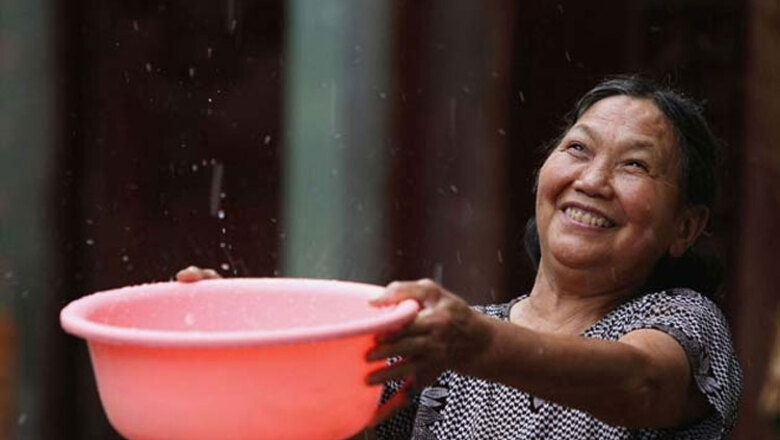
views
Washington: Collecting rainwater for vegetable irrigation could reduce water bills, increase caloric intake and even provide a second source of income for people in India, according to a new study by scientists looking at NASA satellite data.
The study is based on precipitation data from the Tropical Rainfall Measuring Mission (TRMM), a joint mission between NASA and the Japan Aerospace Exploration Agency, which provided observations of rainfall over the tropics and subtropics from 1997 to 2015.
"India has severe problems getting potable water to all of its residents," said Dan Stout, research assistant in the Department of Civil Engineering at the University of Utah.
"We considered collecting water in a relatively small tank, and it's amazing the effect that doing something that small and simple can have on the Indian people," Stout said.
Rainwater harvesting is not a new concept, but researchers said it is a largely untapped resource in India.
In the new study, the team examined the possibilities if Indians collected precipitation in cheap 200-gallon tanks that they could easily engineer to fit in densely populated urban areas, such as many of India's growing cities.
The team analysed satellite data of precipitation in different areas to evaluate the availability of rainwater for direct harvesting.
The team used data sets provided every three hours from 1997 to 2011 to determine how much precipitation, on average, was available for collection and supplementation in each of the six test cities: Bangalore, Delhi, Hyderabad, Kolkata, Mumbai and Srinagar.
The team input TRMM data into algorithms that Stout developed to determine the benefit to each of two scenarios: indoor use and outdoor vegetable irrigation.
They estimated each person would require an average of about 35 gallons of water per day. For an average household of five people, demand would be about 178 gallons daily. Outdoor vegetable irrigation would require less water.
The team calculated irrigation demands for a roughly 215-square-foot garden planted with tomatoes and lettuce.
The team found rainwater harvesting provided for nearly 20 per cent of the average indoor demand overall, though some seasons, such as southern monsoon season, provided more.
Rainwater harvesting provided sufficient water source for vegetable irrigation, which demands less water than indoor use.
While rainwater collection for irrigation resulted in fewer water bill savings, it did provide vitamin-rich food, profit from selling excess vegetables and a significantly shorter payback period for infrastructure, operation and maintenance required for the endeavour.
This can help boost cost savings and increase quality of life in India, researchers said in the study published in the Urban Water Journal.
After a one-year payback period, rainwater harvesting for vegetable irrigation would provide a profit of between 1,548 and 3,261 rupees per year and a total cost savings of between 2,605 and 4,522 rupees per year.

















Comments
0 comment